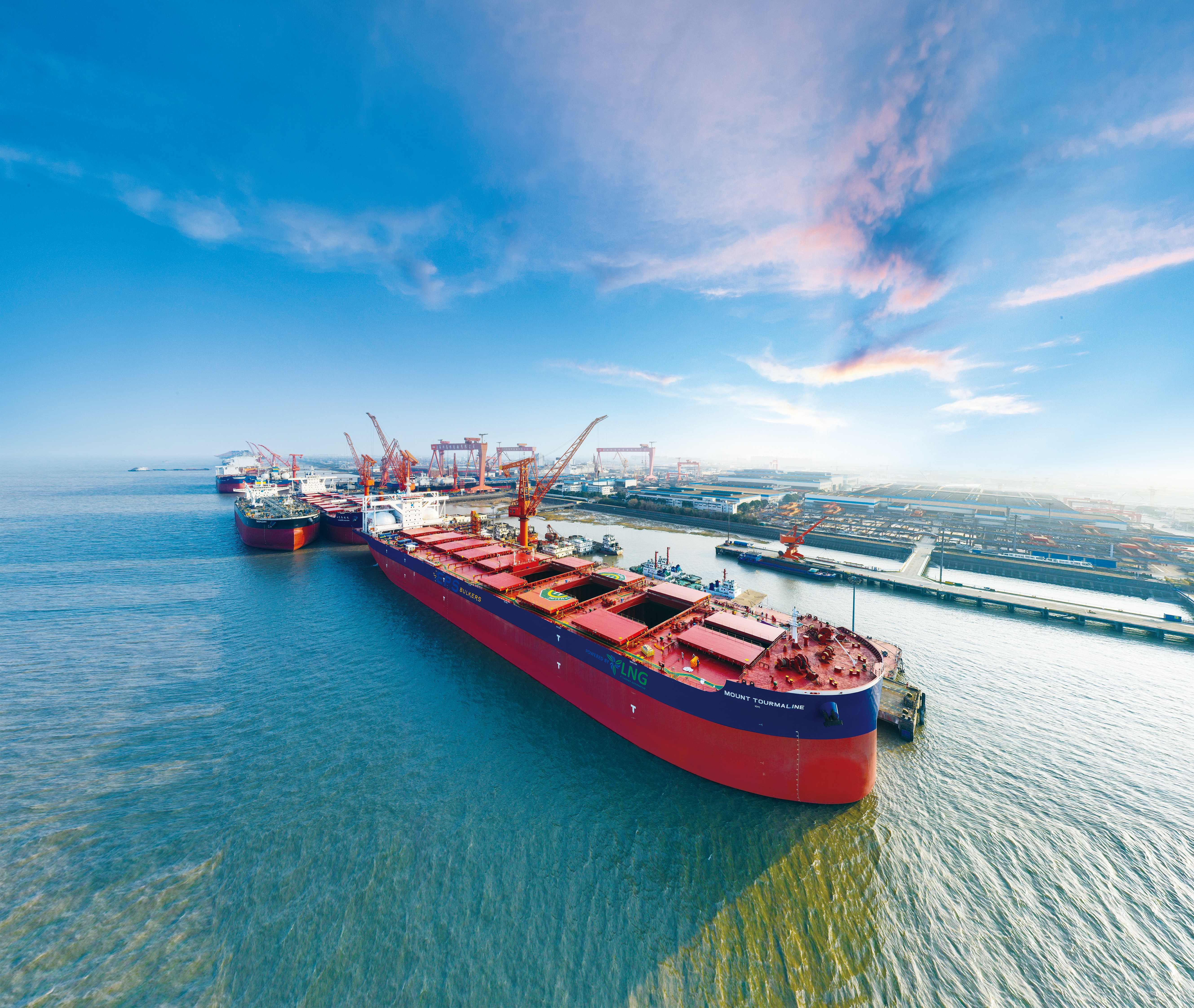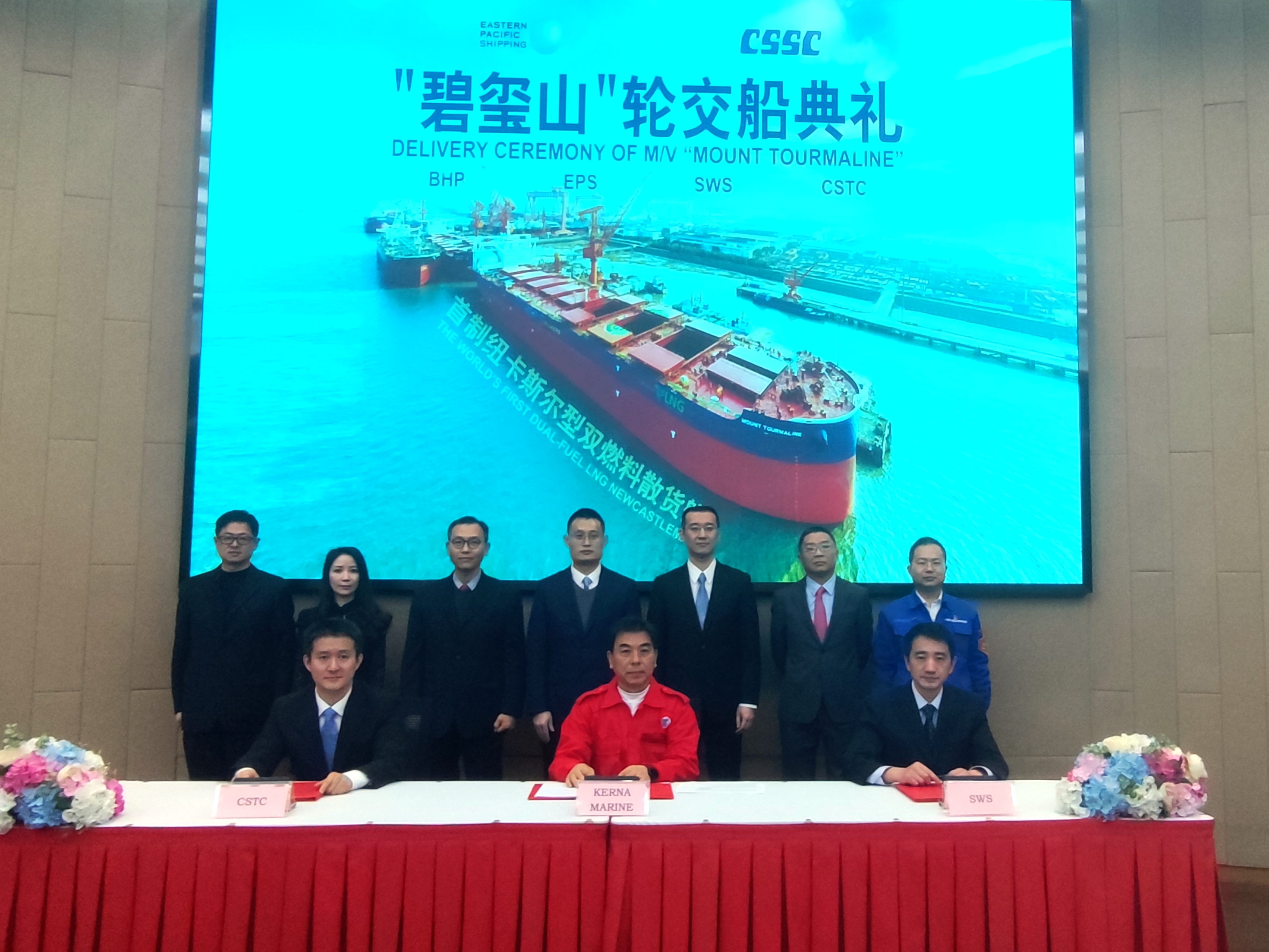“MOUNT TOURMALINE”, the world's first 209K DWT dual-fuel Newcastle bulk carrier built by SWS for Singapore Eastern Pacific Shipping (EPS) was successfully delivered on January 28, marking that China's shipbuilding industry has officially entered the era of “dual-fuel” in the field of design and construction of large bulk carriers.

The World's First Dual-Fuel Newcastle Bulk Carrier “MOUNT TOURMALINE”
“MOUNT TOURMALINE” is a new generation of which SWS owns the independent intellectual property. With a length of 299.50 meters, a moulded breadth of 50 meters, a moulded depth of 25.20 meters, a designed draught of 18.40 meters and a designed navigation speed of 14 knots, the vessel has two C-type LNG gas cylinders to supply fuel which makes the fuel gas endurance reach 20,000 nautical miles, allowing the vessel to complete two round-trip routes from China to Australia or one round-trip route from China to Brazil. Using LNG as fuel, it basically eliminates the emission of particulate matter and sulfide and the EEDI is 45% lower than the baseline. Meanwhile, it meets the latest international norms and rules of IMO and is a green, environment-friendly, energy-saving and safe vessel with high technology.

Delivery ceremony of “MOUNT TOURMALINE”
SWS has already conducted in-depth researches on international shipping market trend and relative norms and rules since 2012, mapped the development of dual fuel vessels in advance, successively overcome four key technical development difficulties and obtained the independent development and design capability in dual fuel vessels which was perfectly verified in the ”MOUNT TOURMALINE”.
Highlight 1: Innovate the general layout of large LNG gas cylinders.
The C-type LNG gas cylinders are arranged on both sides of the accommodation structure at the ship's stern. In order to meet the installation requirements and operational safety of the mooring system, and improve the margin of living space on the deck, SWS has introduced the line-type design of the container vessel's deck across the border, optimizing the stern deck line-type from the conventional inward contraction type in the original design to the full-width type. On the basis of the integrity of the ship's main scale and hull structure, the advantages of the original bulk carrier project of SWS are given to full play to reduce the huge cost impact on hull design and construction caused by modification.
Highlight 2: form the ability of independent design of dual-fuel gas supply system (FGSS) integration.
The LNG gas supply system converts the liquid LNG fuel into the gas fuel that can be used by the main engine and other equipment through pressurization, gasification, heating and other steps. It needs to go through the transformation from the low temperature liquid state of - 163 ℃ to the high temperature gas state in a short time. In order to ensure that the change of gas state and the gas supply process can be designed, calculated and controlled, the research and development team has carried out risk assessment, analyzed various potential risk factors, continued to strengthen the research of FGSS core key technologies and improved the optimization technology solution. Finally, SWS formed the independent design capability of dual-fuel gas supply system integration.
Highlight 3: calculate the temperature field around the liquid cylinders and complete the selection of steel grade.
The temperature is related closely with the strength and toughness of steel and different temperature environments have strict specification requirements on steel grade. The temperature of LNG loaded in the cylinders is as low as - 163 ℃. Although there is an insulating base to separate the cylinder body from the hull structure, the temperature change in partial area is very complex due to the close distance between the two. The research and development team has used professional knowledge to conduct multiple thorough analysis and simulation of LNG state and temperature change process, and selected the most suitable steel grade to ensure the safety and reliability of the base area.
Highlight 4: arrange low-temperature pipeline reasonably.
When the system is switched to operation or stopped, the temperature in the LNG fuel cryogenic pipe will change significantly, with the temperature range as high as 45 ℃ or as low as - 163 ℃. The effect of thermal expansion and contraction will cause additional stress on the pipe. The development team calculates and analyzes the stress of low-temperature pipeline according to the requirements of the International Code for the Construction and Equipment of Ships Carrying Liquefied Gases in Bulk (IGC code), so as to make the pipeline layout and path more reasonable and safe.